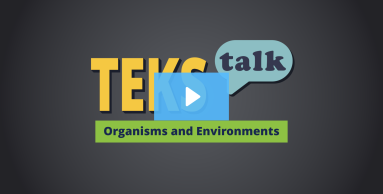- Science
- Grade 3
- Organisms and environments
Science.3.13.A
explore and explain how external structures and functions of animals such as the neck of a giraffe or webbed feet on a duck enable them to survive in their environment; and

Knowledge and Skills Statement
Research
Sinoradzki, Kristen, and TJ McKenna. “What’s so Phenomenal About Animals? Using Structure and Function to Explore Animal Diversity.” Science and Children 58, no. 6 (Season 2, 2021): 86–90. National Science Teachers Association. www.nsta.org/science-and-children/science-and-children-julyaugust-2021-0/whats-so-phenomenal-about-animals.
Summary: This article explains that allowing students to explore animal diversity and the different structures that allow them to survive can help increase student engagement. Discussions about this topic can help promote a broader vocabulary.
Research
Urban-Rich, Juanita. 2006. "The polar insulation investigation." Science and Children 44, no. 2 (2006): 20.
Summary: Oceanographer, Juanita Urban-Rich, visits an elementary classroom to lead an activity on insulation in animals. Students wonder how animals can survive in cold temperatures like the Arctic. The class lists which animals live in this environment and what “coverings” they have to keep them warm (feathers, fur, and blubber). Students use thermometers to understand the arctic temperatures better. Students predict which animal coverings provide the best insulation and why. Students will practice collecting data and visually displaying the data during the investigation. After reviewing the data, students discuss the properties that make each covering a good insulator.
